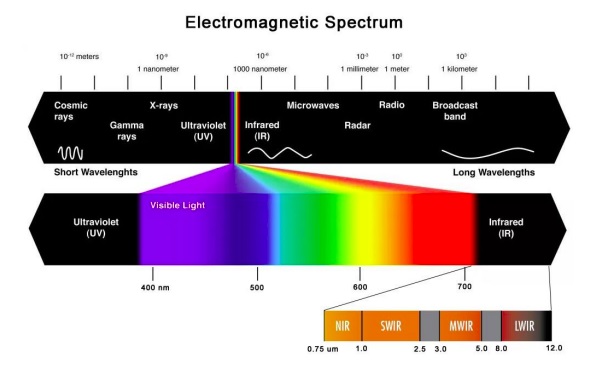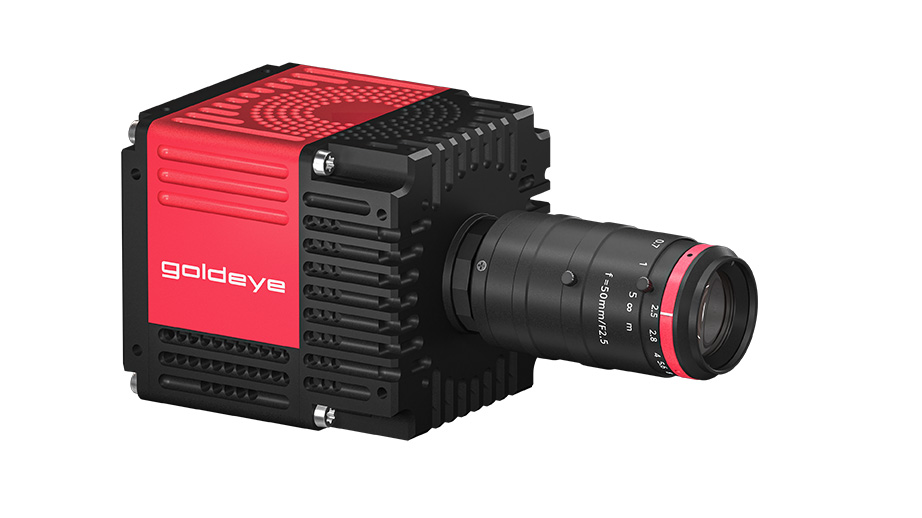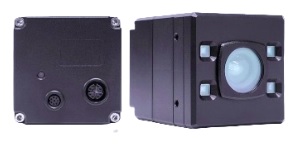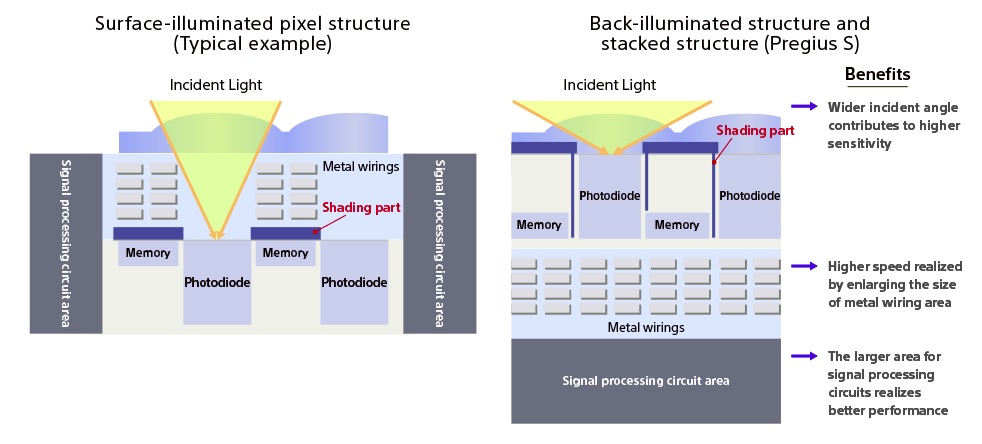Visible imaging, infrared imaging (IR), short wave IR (SWIR), Extended SWIR (XSWIR) – it’s an alphabet soup of acronyms and their correlating concepts. Let’s briefly review each type of imaging to set the stage for the new kid in town – XSWIR – to better understand what each has to offer.

Visible imaging is the shorthand name for machine vision applications that are in the same portion of the spectral range as human vision, from about 380 – 700 nm. The field of machine vision initially developed largely in the visible space, partly because it’s easiest to conceptualize innovation in a familar space, but also due to the happy coincidence that CCD and CMOS sensors are photosensitive in the same portion of the spectrum as human sight!
Infrared imaging (IR), including near-infrared (NIR), focus on wavelengths in the range above 700 nm. NIR is roughly from 750 nm – 1400 nm. Applications include spectroscopy, hardwood and wood pulp analysis, biomedicine, and more.
Short-wave IR (SWIR) applications have tended to fall in the range 950 nm – 1700 nm. Applications include quality-control of electronics boards, plastic bottle-contents inspection, fruit inspection, and more. The camera sensor is typically based not on Silicon (Si) but rather Indium gallium arsenide (InGaAs) , and one typically requires special lensing.
Then there is MWIR (3 – 5 um) and LWIR (9 – 15 um). You can guess what M and L stand for by now. MWIR and LWIR are interesting in their own right, but beyond the scope of this short piece.
We draw your attention to a newish development in SWIR, namely Extended SWIR, or simply XSWIR. Some use the term eSWIR instead – it’s all so new there isn’t a dominant acronym yet as we write this – we’ll persist with XSWIR for purposes of this piece. XSWIR pushes the upper limits of SWIR beyond what earlier SWIR technologies could realize.
As mentioned above, SWIR cameras, lenses, and the systems built on such components tended to concentrate on applications with wavelengths in the range 950 – 1700 nm. XSWIR technologies can now push the right end of the response curve to 1900 nm and even 2200 nm.
Big deal, a few hundred more nanometers of responsivity, who cares? Those doing any of the following may care a lot:
- Spectral imaging
- Laser beam profiling
- Life science research
- Surveillance
- Art inspection
A camera taking XSWIR to 1900 nm responsivity is Allied Vision Technologies’ Goldeye G-034 XSWIR 1.9. AVT’s sister camera the Goldeye G-034 XSWIR 2.2 achieves even more responsivity up to 2200 nm.

The Goldeye family was already known for robust design and ease of use, making SWIR accessible. Of particular note in the new Goldeye XSWIR 1.9 and 2.2 models are:
- Extended SWIR wavelength detection beyond 1,700 nm
- Multi-ROI selection to speed up processes, especially useful in spectrometer-based sorting and recycling applications
- Industrial grade solution for an attractive price
Tell us about your intended application – we love to guide customers to the optimal solution.
1st Vision’s sales engineers have over 100 years of combined experience to assist in your camera and components selection. With a large portfolio of lenses, cables, NIC card and industrial computers, we can provide a full vision solution!





